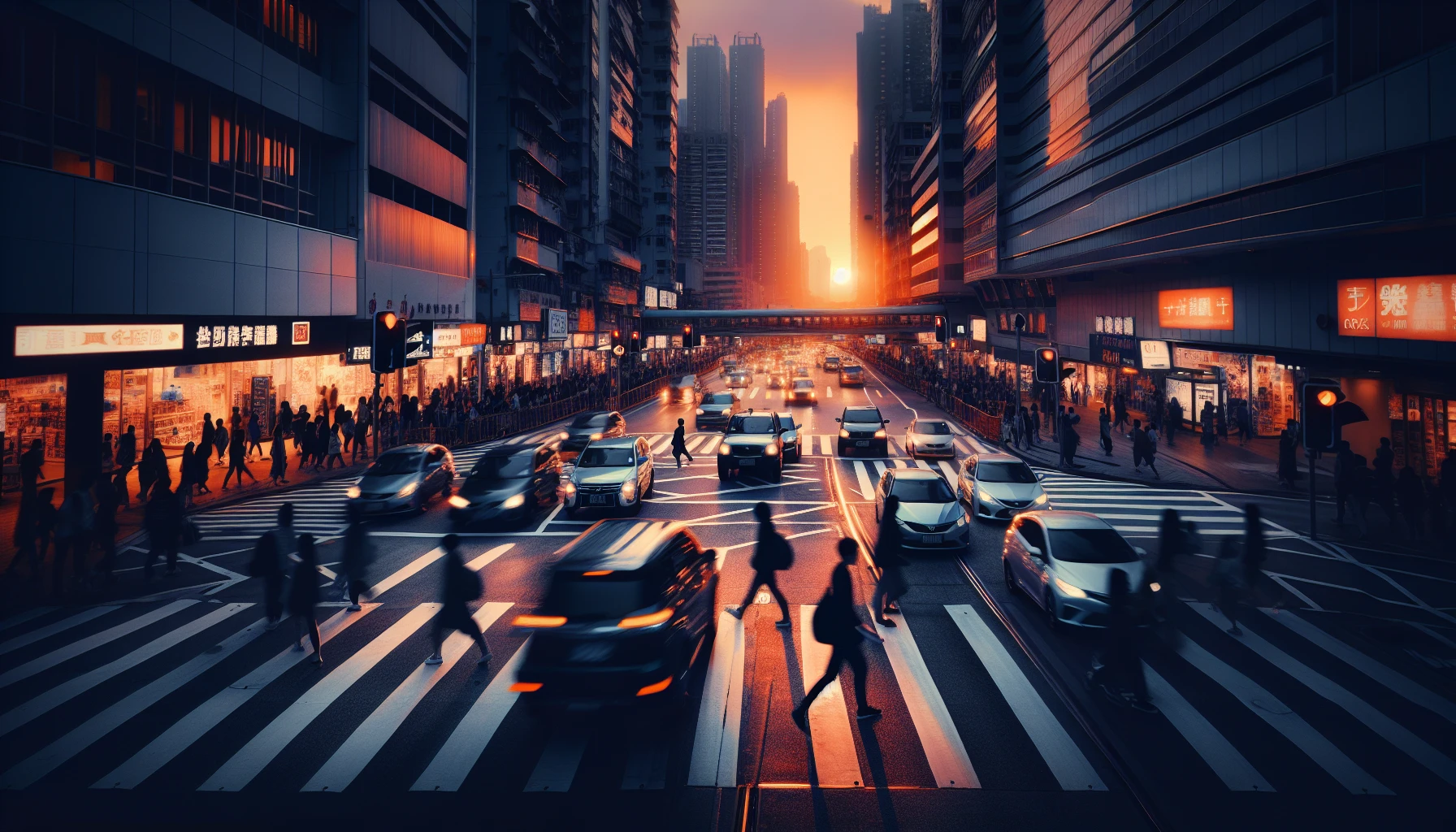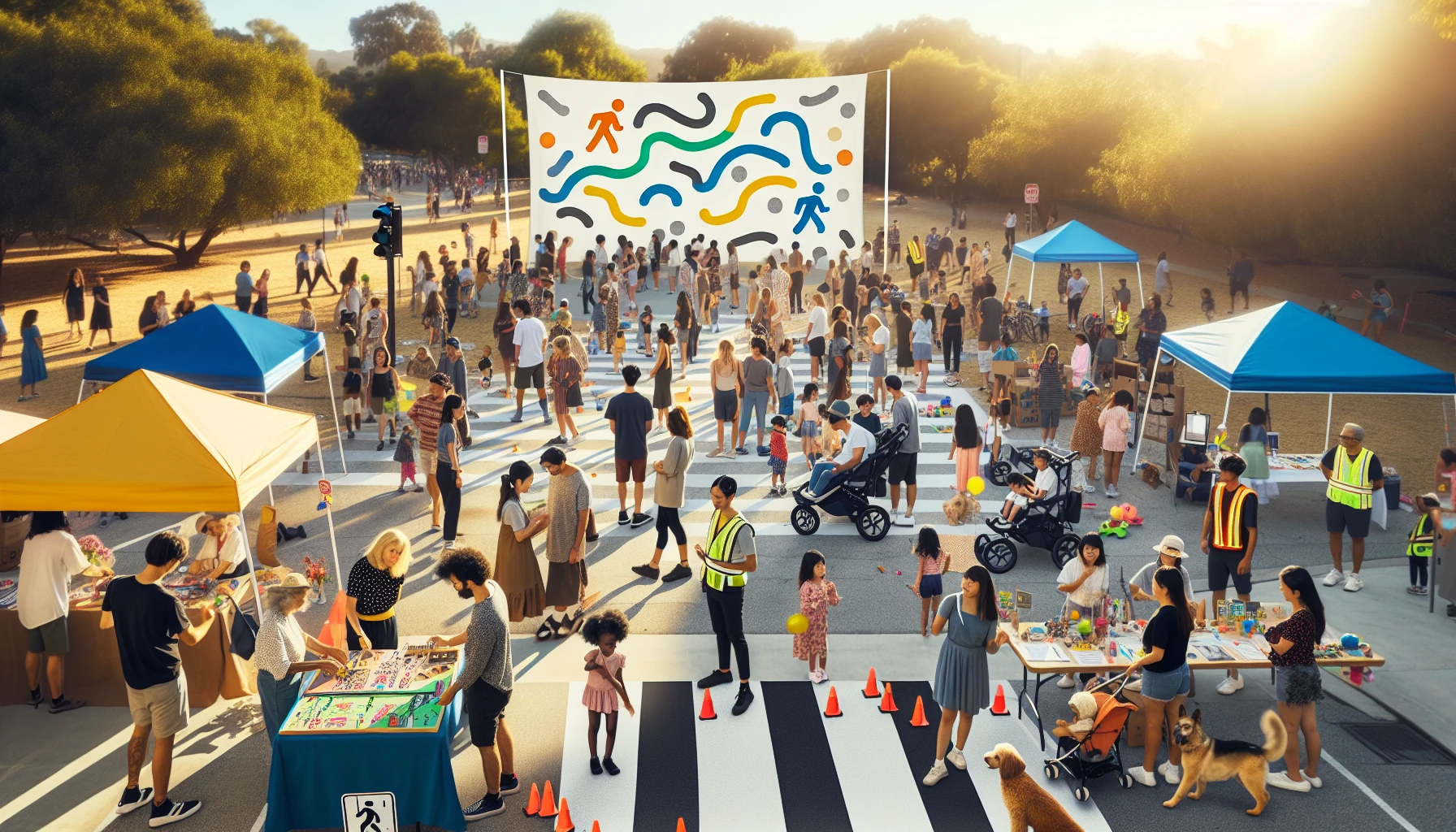Imagine walking through your neighborhood, only to find that crossing the street has become a life-threatening endeavor. This has become the reality for many pedestrians across the United States, as a new study finds pedestrian deaths surge 77 since 2010. As we explore the reasons behind this alarming trend, we this new report will also shed light on potential solutions to make our streets safer for everyone.
Key Takeaways
- Pedestrian deaths in the U.S. have reached their highest rate since 1981, with Southern states identified as hotspots for fatalities due to a variety of contributing factors
- Reckless driving behaviors, alcohol consumption and urban planning issues are underlying causes behind the spike
- Technology, legal recourse and advocacy can help reduce pedestrian fatalities by providing technical solutions, seeking justice and effecting change in policies
The Alarming Rise in Pedestrian Fatalities

Walking down the street should not impose danger, yet the number of pedestrian traffic fatalities in 2022 has escalated to its highest since 1981, recording 7,508 fatalities. Pedestrian deaths happened primarily due to being struck by motorized vehicles while walking along or across U.S. roadways, according to data from the Governors Highway Safety Association (GHSA). Passenger cars are involved in the majority of accidents, resulting in most pedestrian deaths.
The most hazardous areas for pedestrians are:
- Roads with heavy vehicular traffic in close proximity to bustling commercial and service hubs with substantial foot traffic
- Areas with poor lighting or visibility
- Crosswalks without proper signage or signals
- Intersections with high-speed turning vehicles
- Construction zones or areas with obstructed sidewalks
A staggering 77% of pedestrian deaths occur after dark, with nighttime crash deaths increasing by 86% since 2010. According preliminary data used to the GHSA report, addressing risky driving behaviors and lowering speed limits on major arterial roads could mitigate risky driving behaviors and avert future accidents, including traffic related deaths and other traffic related deaths.
The Epicenter of the Crisis: State Data Reveals Hotspots

Southern states below the Sun Belt have the highest rate of pedestrian deaths, with New Mexico, Arizona, and Florida ranking as the most dangerous states for pedestrians. In comparing pedestrian fatalities across different states, one should take into account factors like the density of drivers on the road, pedestrian safety measures in place, and driver demographics, as they can affect risky and dangerous driving behaviors.
The Biden administration is proactively working to safeguard pedestrians by proposing a new rule that would establish elevated performance standards for cars with automatic emergency braking and pedestrian-detection technology. This would ensure more people are safe on roads. Research shows that pedestrians are twice as likely to suffer fatal injuries in a collision when a car is traveling at 30 mph compared to 20 mph, especially on non-freeway arterial roads.
The Underlying Factors: What's Behind the Spike?

A variety of factors contribute to the surge in pedestrian deaths, such as reckless driving behaviors, alcohol consumption, and issues related to urban planning. The GHSA report demonstrates that the rise in pedestrian fatalities is linked to a sharp rise in hazardous driving behaviors, contributing to the overall increase in traffic deaths. Alcohol consumption is also a major contributor to pedestrian fatalities.
Issues in urban planning, such as insufficient sidewalks and increased vehicle speed, have in recent years been pinpointed as factors contributing to the escalating pedestrian fatalities. To combat these issues and accommodate more pedestrians, better designed infrastructure is needed to ensure the safety of pedestrians and drivers alike.
Addressing the Issue: How to Prevent Deaths on Our Streets

Preventing deaths on our streets, including arterial roadways, requires a multi-faceted approach. Local lawmakers can implement the following measures:
- Traffic calming measures such as sharp corners, pedestrian islands, and large sidewalk bulb-outs
- Speeding and red light cameras
- Adding bike lanes to foster a safer environment for everyone using the roads
Walkability elements that can make a location safer for pedestrians include:
- Limiting vehicular access
- Emphasizing sidewalks
- Providing adequate lighting
- Implementing streetscapes designed to facilitate safe walking
Advocating for policies and infrastructures that provide data that are friendly to pedestrians can help us build communities where walking becomes a safe and pleasurable activity.
The Safe Streets Initiative is a Federal Department of Transportation (DOT) grant program designed to promote safety on roads and streets by preventing fatalities and serious injuries. This initiative, along with the support of state highway safety offices, can help address the pedestrian safety crisis and prevent unnecessary tragedies.
Technology and Traffic Safety: A Technical Solution?

Progress in vehicle safety features and smart city infrastructure may serve as a solution to improve traffic safety. Recent developments include:
- Forward collision warnings
- Automatic emergency braking with pedestrian detection
- Lane-keeping assist
- Adaptive cruise control
- Blind-spot monitoring
- Predictive maintenance aided by machine learning algorithms
Safety features such as collision detection and automatic emergency braking systems can potentially reduce pedestrian fatalities by increasing awareness, lower speeds, improving visibility, and providing timely warnings to both drivers and pedestrians. Smart city infrastructure can facilitate traffic safety and reduce pedestrian fatalities by providing real-time information to vehicles, optimizing traffic flow, and supplying data for targeted interventions.
Multiple studies assessing the efficacy of technological solutions in minimizing pedestrian accidents have provided vital insights about the potential benefits such advancements could bring for pedestrian safety. As technology continues to evolve, we may see a significant reduction in pedestrian fatalities.
The Human Cost: Stories Beyond the Statistics
The human cost of pedestrian deaths is immense and goes beyond mere statistics, with individual narratives underscoring the urgency for action and change. Pedestrian death can have a profound impact on a family, resulting in intense grief, psychological distress, and economic hardship. The effect on communities is far-reaching, with safety concerns, emotional distress, reduced community solidarity, and economic ramifications on daily lives.
Survivor accounts, like that of a 9-year-old boy hit by a vehicle, and a pedestrian dealing with the repercussions two years later, act as poignant reminders of the urgent need for change. These stories emphasize the importance of addressing the issue of pedestrian safety and pushing for policy changes to prevent future tragedies.
Legal Recourse and Advocacy: Seeking Justice and Change
Legal recourse and advocacy are instrumental in seeking justice for victims of pedestrian accidents and advocating for policy changes to avert future tragedies. Pedestrian accident victims have the legal right to pursue a claim against the at-fault driver’s liability insurance and may be entitled to compensation for their losses. Pursuing justice through the legal system may involve:
- Negotiations with insurance companies
- Conducting investigations
- Collecting evidence
- Securing legal representation in court
Advocacy groups have taken numerous measures to reduce pedestrian fatalities, such as advocating for the expansion of sidewalks, bike lanes, and bus lanes, and promoting Complete Streets policies, Vision Zero initiatives, and the safe system approach. These campaigns have been highly effective in altering traffic laws and retaining road safety as a paramount concern, facilitating beneficial social transformation.
Summary
The alarming rise in pedestrian deaths is a pressing issue that demands immediate attention. Through a combination of policy changes, infrastructure improvements, technological advancements, and legal action, we can work towards creating safer streets for all. By understanding the underlying factors and working together, we can make a significant impact on reducing pedestrian fatalities and ensuring that our communities are safe for everyone.
Frequently Asked Questions
What percent of traffic fatalities are pedestrians?
Pedestrian deaths accounted for 17% of all traffic fatalities in 2021, the highest annual proportion during the past 11 years. Pedestrian and bicyclist fatalities together comprise approximately 19 percent of all traffic deaths. Males represent 70 percent of drivers and pedestrians killed in traffic crashes each year.
How many pedestrians were killed in the United States in 2011?
In 2011, 4,432 pedestrians were killed in the United States, a 3% increase from 2010 and a 7% decrease from 2002.
How many pedestrians were killed in the United States in 2012?
In 2012, 4,743 pedestrians were killed in traffic crashes in the United States.
How many pedestrians are hit by cars each year in the US?
Nearly 8,000 pedestrians are killed in motor vehicle crashes each year in the United States, representing an average of 20 pedestrian deaths occur there every day and one death every 66 minutes.
What is the main cause of pedestrian deaths in the United States?
The main cause of pedestrian deaths in the United States is being struck by motorized vehicles while walking along or across U.S. roadways.

